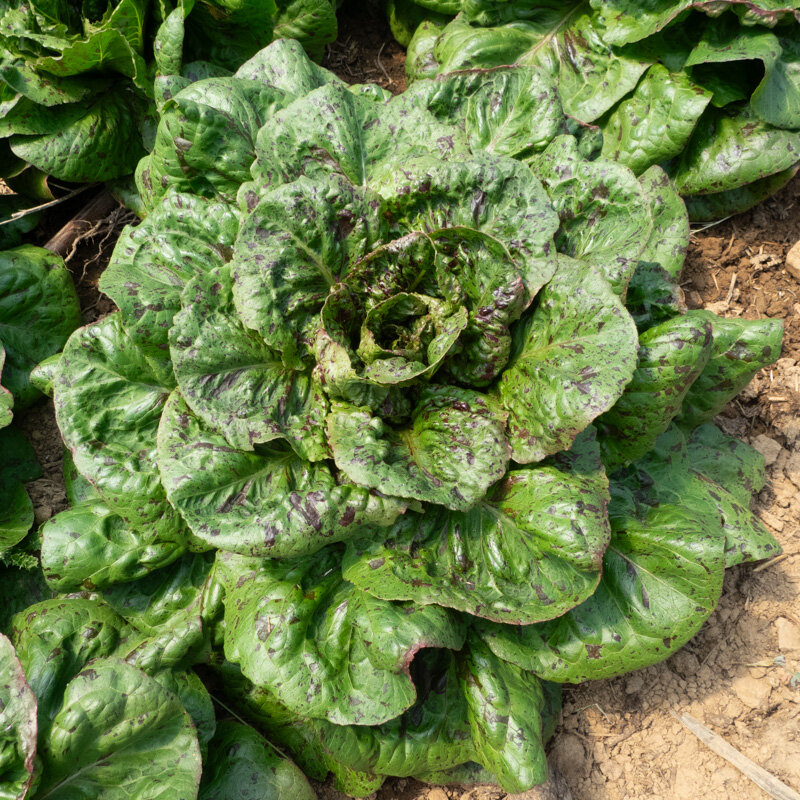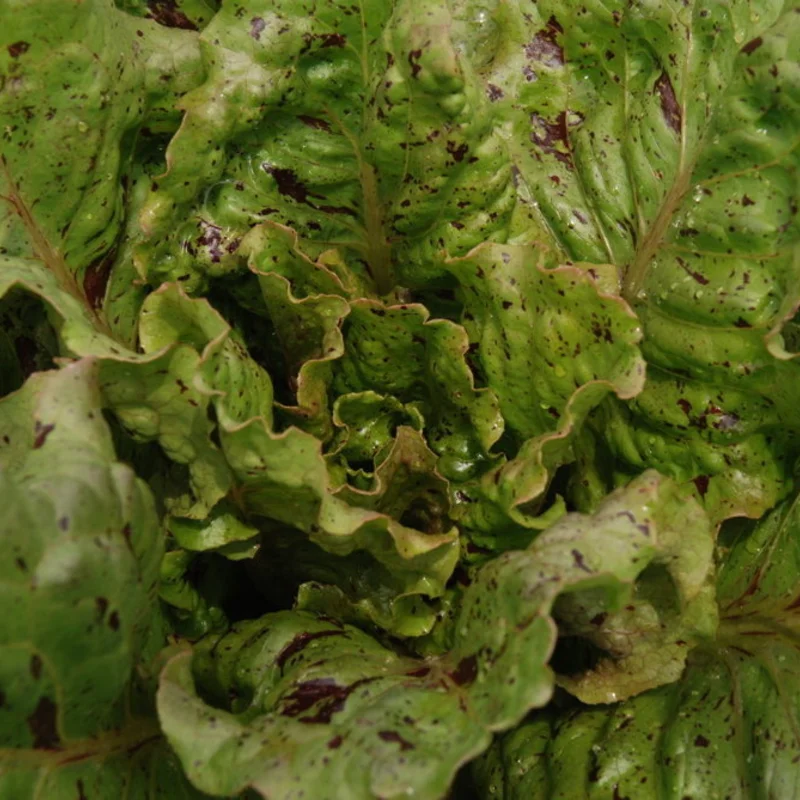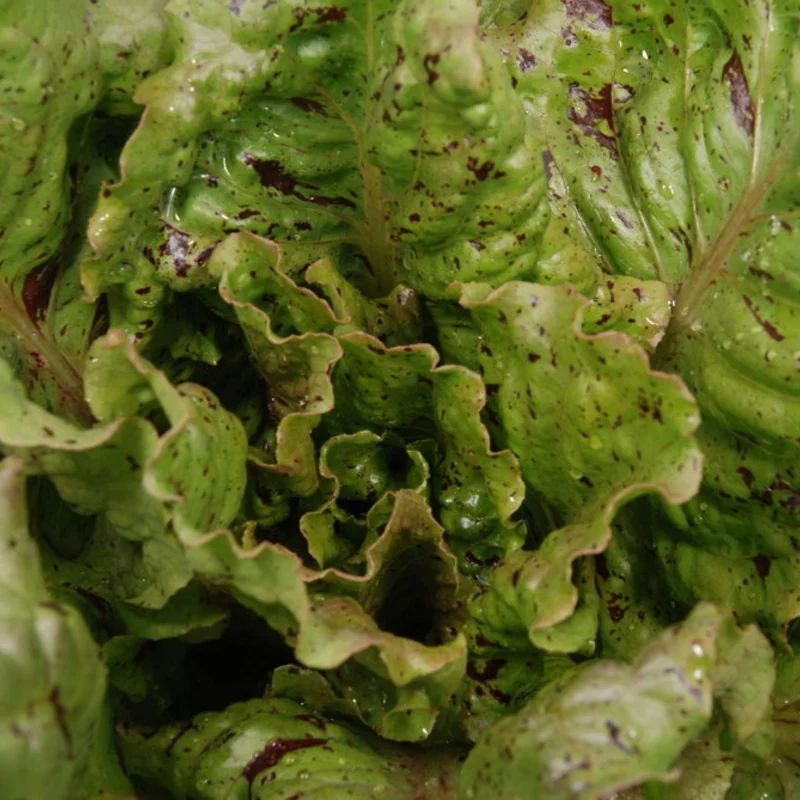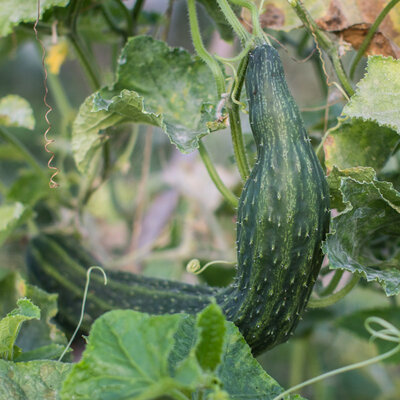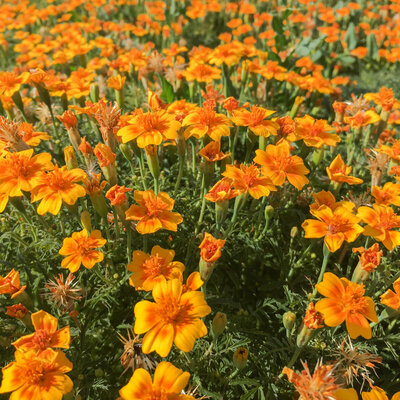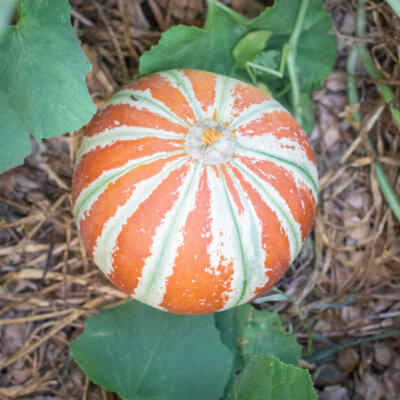Russian - Head Lettuce
This very old variety forms an apple surrounded by green, red-speckled, slightly wavy leaves. It has a juicy texture and mild flavor.
Characteristics of De Russie winter lettuce
De Russie winter lettuce or Goutte de Sang, Lactuca sativa, is a very old, cold-hardy variety of winter lettuce. Originally from Russia, it is listed in Dominique Guillet's Semences de Kokopelli catalog. De Russie winter lettuce stands out for its long green leaves spotted with red, whose juicy texture can be enjoyed raw in salads, but also cooked, stewed or braised to accompany a wide range of vegetables and meats.
Like Brune d'Hiver and Merveille d'Hiver lettuces, De Russie winter lettuce is sown in late summer and harvested in early spring.
When to sow De Russie winter lettuce?
The ideal sowing period is from August to September in pots under cover, and from September to October in the open ground. You can also grow this variety of winter lettuce in pots, to enjoy on terraces or balconies. It is then harvested from October to April.
Seedlings should be sown one month before planting in the vegetable garden, at a temperature of between 15 and 21°C. Cover the lettuce seeds with a light layer of soil and keep the substrate moist until emergence. Transplant into the garden, 30 cm apart in all directions, once the plants have reached the stage of 4 true leaves. Be careful, however, as transplanting can interfere with the development of the lettuce taproot.
Sow lightly directly in the ground, then thin out to 30 cm in all directions when the plants have 4 true leaves, to encourage harmonious development of the lettuces. Choose humus-rich soil and half-shade exposure. The very small seeds can be mixed with radish seeds to avoid over-dense sowing. Stagger sowing, every 15 days, to enjoy lettuce for several months.
What companion plants for De Russie winter lettuce?
In the vegetable garden, this variety of lettuce thrives alongside many plants, such as cucumbers, carrots, onions, radishes, cabbage , beet and strawberries.
How to eat Russian winter lettuce?
Russian winter lettuce is harvested in early spring, from January to April, before it goes to seed. It's best to eat the leaves just after picking, to take advantage of their freshness, as they don't keep long in the refrigerator crisper. Sweet and juicy, they can be eaten raw in salads, cooked in soups or in vegetable juices.
Rich in vitamins and minerals, lettuce plays a key role in the body's cell renewal. Thanks to its fiber and water content, it also facilitates digestion and transit. In addition, the lactucarium contained in Lactuca Sativa gives it calming properties, useful against insomnia and anxiety.
These products may also be of interest to you
in bucket, in the ground
Sow in pots or slabs, one month before planting. Cover the seeds with a thin layer of soil, press lightly and water. Once the plants have 4 leaves, prick out. Alternatively, sow lightly, directly in situ, in rows 30 cm apart, every 15 days, to stagger harvesting. Thin to 10 cm, then 30 cm.
August, September
September, October
January, February, March, April, November, December
in the ground, in pot
semi-shade, sunny
medium
humus
wet, drained, furniture
Lactuca sativa
early
From 90 to 120 g
1 gram
juicy
head
Green, Red
corrugated
Russia
Inconnue
"Semences de Kokopelli" by Dominique Guillet
This ancient variety originated in Russia.




